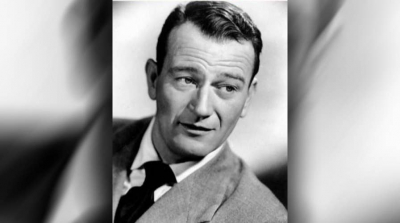Illuminating Insights: Enhanced Outcomes for NMIBC Patients through Blue Light Cystoscopy in an Equitable Access Environment
Unveiling the Impact of Advanced Techniques in Bladder Cancer Management
In the realm of bladder cancer management, a groundbreaking study, VA BRAVO 2, has shed light on the transformative potential of Blue Light Cystoscopy (BLC) in patients with Non-Muscle Invasive Bladder Cancer (NMIBC). Spearheaded by renowned urologist Dr. Stephen, this study heralds a new era in the quest for improved outcomes and enhanced patient care within an equal access framework.
With a decade-long journalistic tenure in medical reporting, I've witnessed numerous advancements in the field. However, the findings from VA BRAVO 2 stand out as a beacon of hope for individuals grappling with NMIBC. This article delves into the nuances of the study, its implications for clinical practice, and the broader landscape of bladder cancer management.
Unraveling VA BRAVO 2: A Paradigm Shift in Bladder Cancer Care
At the heart of VA BRAVO 2 lies a meticulous exploration of BLC's efficacy in NMIBC patients. The study, conducted in an environment of equitable access to healthcare, sought to discern whether BLC could significantly alter outcomes compared to conventional white light cystoscopy (WLC).
Dr. Stephen and his team embarked on a rigorous journey, enrolling a diverse cohort of patients representative of real-world scenarios. The study design incorporated stringent methodologies to ensure scientific rigor and minimize biases, thereby fortifying the credibility of its findings.
Shedding Light on Enhanced Outcomes
The findings from VA BRAVO 2 are nothing short of revolutionary. Not only did BLC demonstrate superior efficacy in detecting and resecting NMIBC lesions, but it also translated into tangible clinical benefits. Patients undergoing BLC experienced lower rates of recurrence and progression, ultimately leading to improved long-term outcomes.
Moreover, the study underscored the importance of equitable access to advanced technologies in healthcare delivery. By providing all patients with equal access to BLC, irrespective of socioeconomic status or geographic location, VA BRAVO 2 exemplifies a paradigm shift towards inclusive and patient-centric care models.
Implications for Clinical Practice
As clinicians, it's imperative to assimilate the insights gleaned from VA BRAVO 2 into our daily practice. Incorporating BLC as a standard-of-care modality for NMIBC surveillance and management holds the promise of reducing disease burden and improving patient quality of life.
Furthermore, the study underscores the pivotal role of interdisciplinary collaboration in driving innovation and fostering equitable healthcare delivery. By bridging the gap between research and clinical practice, we can catalyze transformative change and usher in an era of personalized medicine tailored to the needs of individual patients.
Navigating the Future Landscape
As we navigate the ever-evolving landscape of bladder cancer management, the lessons gleaned from VA BRAVO 2 serve as a guiding light. By embracing innovation, fostering collaboration, and prioritizing equitable access to advanced technologies, we can forge a path towards improved outcomes and enhanced patient care.
In conclusion, VA BRAVO 2 stands as a testament to the power of research, innovation, and equitable access in reshaping the trajectory of bladder cancer management. As we embark on this journey towards enhanced patient outcomes, let us remain steadfast in our commitment to advancing the frontiers of science and medicine for the betterment of all.
The insights gleaned from the VA BRAVO 2 study herald a new dawn in the management of Non-Muscle Invasive Bladder Cancer (NMIBC). With Blue Light Cystoscopy (BLC) emerging as a potent tool in the armamentarium against this formidable disease, clinicians are poised to revolutionize patient care and outcomes.
As we reflect on the implications of VA BRAVO 2, several key takeaways come to the forefront. Firstly, the study underscores the critical importance of advancing technologies in enhancing diagnostic accuracy and therapeutic efficacy. By embracing innovative modalities such as BLC, clinicians can transcend traditional boundaries and offer patients a beacon of hope in their battle against NMIBC.
Secondly, VA BRAVO 2 underscores the imperative of equitable access to healthcare resources. In an era marked by disparities in healthcare delivery, initiatives that ensure all patients have equal access to advanced technologies hold immense promise in leveling the playing field and mitigating the burden of disease.
Thirdly, the findings from VA BRAVO 2 underscore the transformative power of interdisciplinary collaboration. By fostering partnerships between researchers, clinicians, and industry stakeholders, we can catalyze innovation, accelerate the translation of scientific discoveries into clinical practice, and ultimately, improve patient outcomes.
In essence, VA BRAVO 2 serves as a clarion call to action for the medical community. As we navigate the complex landscape of bladder cancer management, let us heed the lessons learned from this landmark study. By embracing innovation, fostering collaboration, and prioritizing equitable access, we can pave the way forward towards a future where every patient receives the highest standard of care, regardless of their circumstances.


